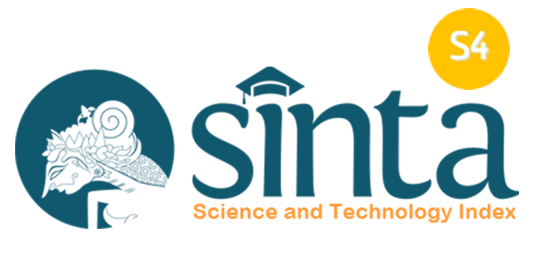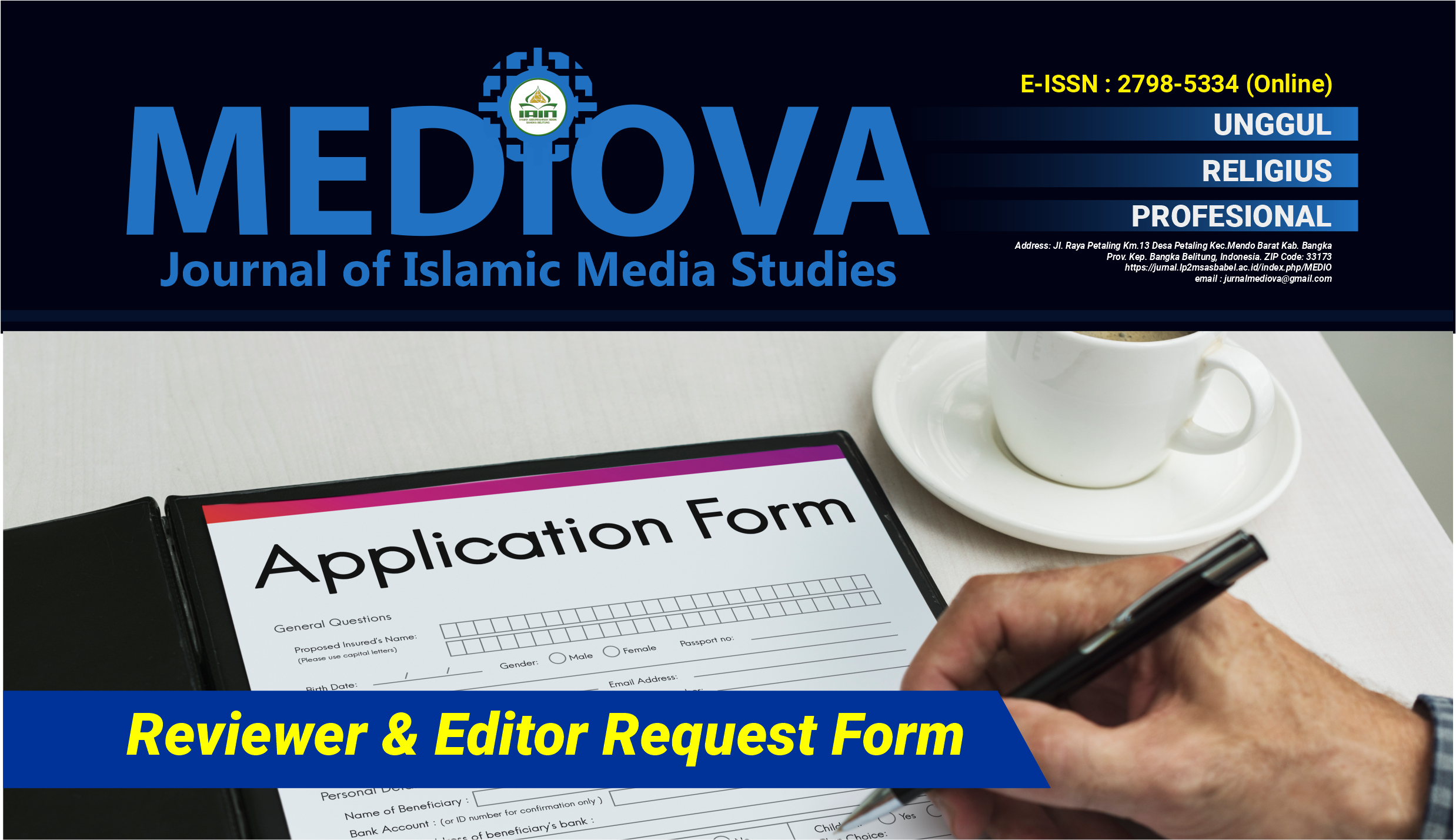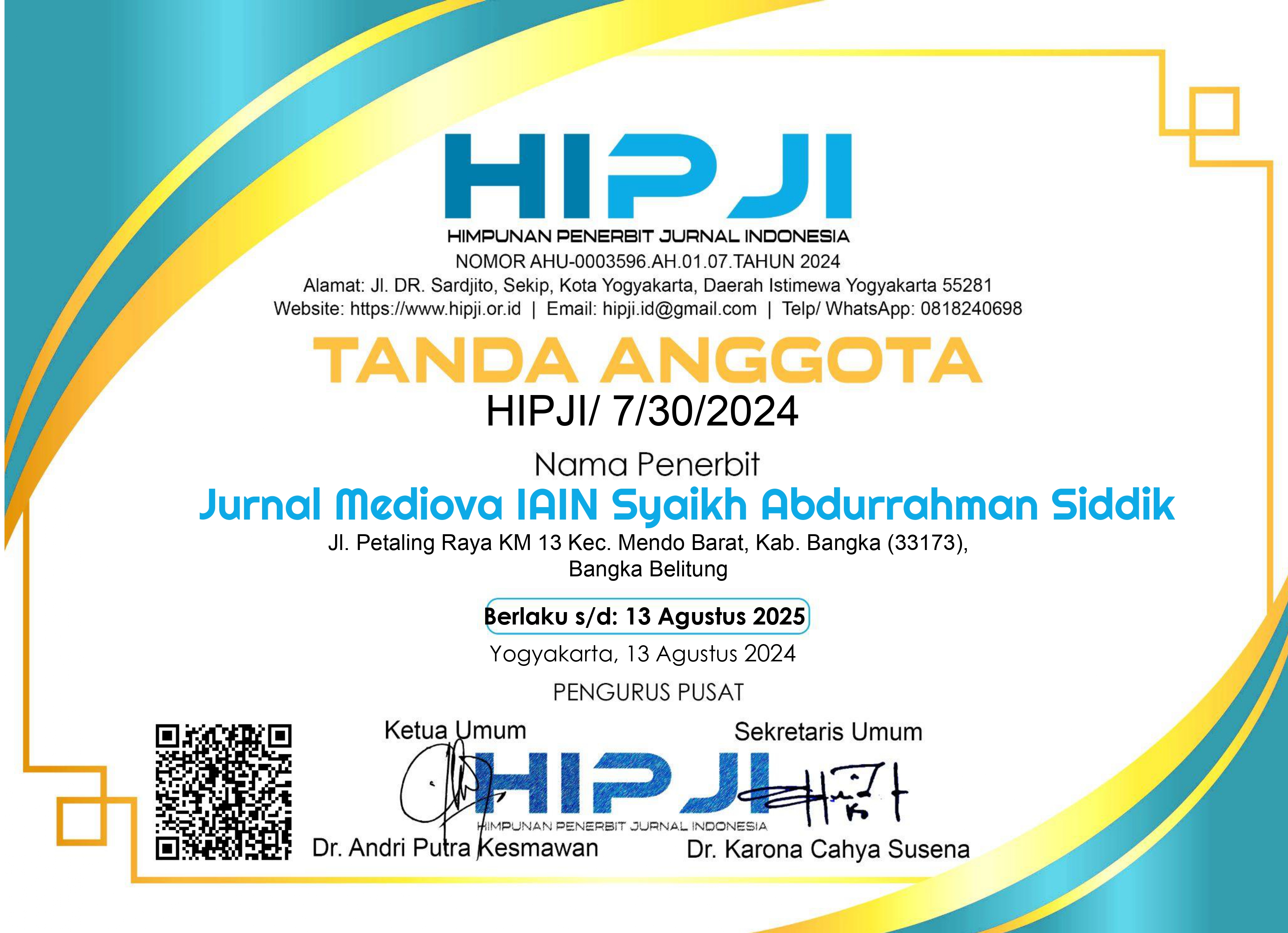IMPLEMENTATION OF VERBAL AND NONVERBAL COMMUNICATION IN THE KHURUJ ACTIVITIES OF STUDENTS OF DAARUL MUKHLASIN ISLAMIC BOARDING SCHOOL, BATURUSA VILLAGE
DOI:
https://doi.org/10.32923/medio.v5i2.6009Keywords:
Communication, Verbal, Non Verbal, KhurujAbstract
Communication plays an important role in da'wah activities, especially in khuruj activities, which emphasize conveying the da'wah message to the community. Preaching doesn't just involve speaking ability, but how someone can make a good impression with the message of the sermon so that it is accepted by the target audience. Therefore, in achieving the success of da'wah, both verbal and non-verbal communication are needed in its delivery. The objectives of this research include: to determine the implementation of verbal and non-verbal communication in the khuruj activities of students at Daarul Mukhlasin Islamic boarding school in Baturusa village, to determine the procedures for khuruj activities of students at Daarul Mukhlasin Islamic boarding school in Baturusa village, and to identify the supporting and inhibiting factors in the khuruj activities of students at Daarul Mukhlasin Islamic boarding school in Baturusa village. To explain the three research objectives above, the researcher used a descriptive qualitative research method where the data generated does not contain numbers, but rather data obtained thru observation, interviews, and documentation, resulting in descriptive data. In this study, the researcher used six informants consisting of Ustadz and students from the Daarul Mukhlasin Islamic boarding school in Baturusa village. The research findings indicate the implementation of verbal and non-verbal communication during the khuruj activity. Which means verbal communication is used more frequently. Because during the community's khuruj, the ustaz and santri interacted with each other both verbally and in writing. Meanwhile, the implementation of verbal communication is found in the good habits of students taught by the pesantren and practiced during khuruj activities, so these good habits contain a da'wah message that can be accepted by society.
Downloads
Published
Issue
Section
License
Copyright (c) 2025 Pani Azfa

This work is licensed under a Creative Commons Attribution 4.0 International License.
Copyright Assignment
As an author of Journal Mediova of the Islamic Journalism study program of the Islamic Da'wah and Communication Faculty, IAIN Syaikh Abdurrahman Siddik Bangka Belitung, I, who sign below:
Declare:
- My paper is authentic; my own writing and it has not been published/proposed on any other journals and publication.
- My paper is not plagiarism but my original idea/research.
- My paper is not written by other help, except with Board of Editors and Reviewers recommendation who have been chosen by this journal.
- In my paper, there are no other writings or opinions except referred in bibliography and relevant with the rule of writing in this journal.
- I will do this assignment for sure. If there are irregularities and untruths in this assignment, I will be responsible later according to the applicable law.
- Authors retain copyright and grant the journal right of first publication with the work simultaneously licensed under a Creative Commons Attribution 4.0 International License that allows others to share the work with an acknowledgment of the work's authorship and initial publication in this journal.
- Authors are able to enter into separate, additional contractual arrangements for the non-exclusive distribution of the journal's published version of the work (e.g., post it to an institutional repository or publish it in a book), with an acknowledgment of its initial publication in this journal.
- Authors are permitted and encouraged to post their work online (e.g., in institutional repositories or on their website) prior to and during the submission process, as it can lead to productive exchanges, as well as earlier and greater citation of published work (See The Effect of Open Access).








.png)









